Killing Floor 3 has an excellent headshot. It’s the kind of frisson-inducing gun/baddie interaction that most FPS games strive for and fail: somehow crisp and explosive at once, like popping a balloon full of wedding china. There’s a deliciously tangible sense that a metal cylinder has launched out of your hands at several times the speed of sound and shattered the entire existence of the snarling cannibal clone in front of you, a tactile treat that KF3’s waves of mutant men will happily feed you over and over again. Bloody good headshot, I say.
I just wish that, after hours and hours, this game would produce something else that excites as much as its dome-blasting. Or, at least, balances that instant gratification with more enduring reasons to keep tooling up and shipping out. Instead, it ends up coasting on gunfeel, and when asked for something new or something fresh, can only point towards pages of tedious stats.
Out in the field, this sequel treads the same bloodied ground as the first two games: workmanlike shooting of increasingly gruesome Zeds, with a cash-for-gore system that enables the buying of heavier weaponry between waves. Much grumbling has occurred over the switch from the perk system of old to KF3’s new specialists. (Previously, any cosmetic player skins could be matched with any perk, or class. But now each Sharpshooter, Medic and so on is a hero shooter-style named character.)
Yet besides the fact that developers Tripwire plan to undo this change post-release, locking perks to personalities doesn’t actually interfere with the business of Zed slaying to any significant degree. It’d be nice to play Firebug without hearing the Firebug character’s constant, sub-Marvel quipping, sure. But the only real change is each specialist’s rechargeable ultimate ability, such as the Commando’s acid-spitting drone buddy or the Ninja’s grapple gun, and those are only good for a few kills per round, out of potentially hundreds that need clearing.
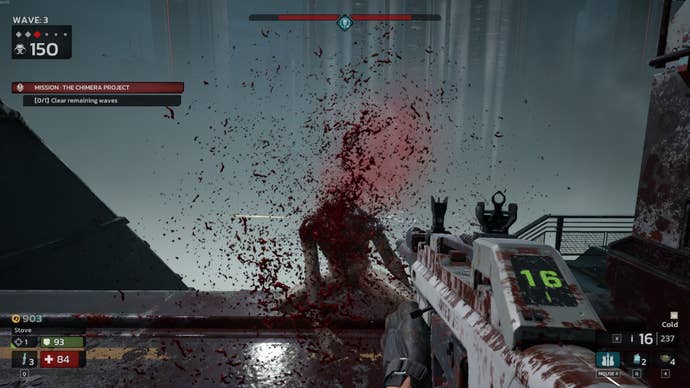
If anything, the specialists are a missed opportunity to make this co-op shooter more co-operative. I’ve spent over a hundred hours in the original Killing Floor, much of it stabbing medical syringes into teammates or helping to weld a door shut as a horde, roughly the size of the population of Wales, batters into the other side. There’s little of that here. Medics are medics, and the Engineer can erect ziplines or open armour lockers for pals to use, but as teamplay has become literally more specialised, it’s also become rarer overall. Most squad comps therefore look like a band with five lead guitarists and one poor Medic on drums, where everyone – including Medics and Engineers, in fact – gets a highly lethal ultimate and a selection of damage-boosting upgrades that make solo play far less risky.
Granted, hardly anyone is daft enough to wander off during a boss fight, and most players have the wherewithal to gang up the chunkier late-wave specimens. The Zeds themselves, though, are an overly familiar bunch at this point. There are fewer total varieties than in Killing Floor 2 and, outside of the three new bosses, none that haven’t appeared before. All three of those climax monsters, meanwhile fit a broadly similar template of ‘Big thing wot jumps at you’. Tripwire have tried to spice up fights by teaching the old Zeds new tricks, most successfully with the flame-chucking Husk: he’ll now jetpack up to vantage points where he can lob fireballs down like a fleshy mortar, deviously escaping the effective range of shotguns and launchers. Unfortunately, that’s the only example I can think of where new Zed tactics might force a change in your own. In the end, Killing Floor 3’s shooting is precision-heavy, yet straightforward: all problems are best solved by booming away at weakpoints, be they the Husk’s unstable backpack or, more likely, a head.
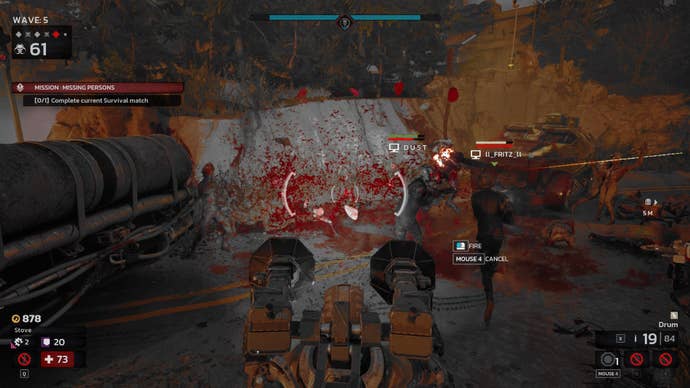
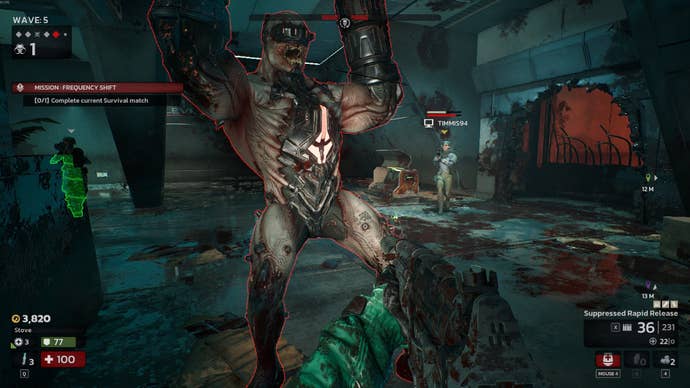
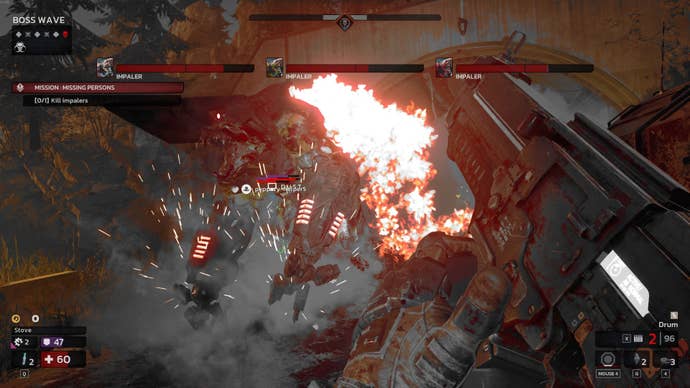
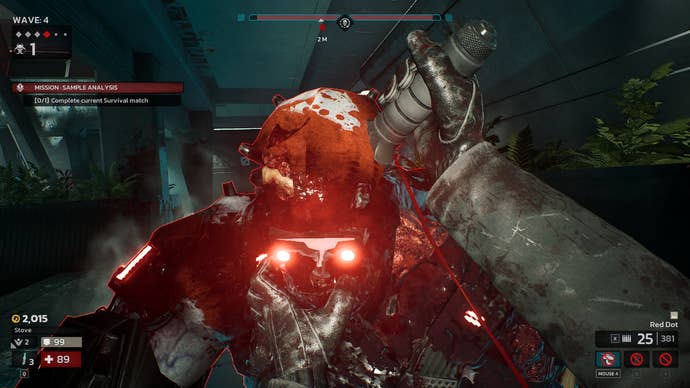
Like I say, there are plenty of occasions when this simple act of clicking on body parts will burst the dopamine banks. Flattening an entire crowd of specimens with successive on-target bang-bang-bangs, say. Or spinning around and reflexively snap-shooting a Zed whose teeth were closing the final few inches on your neck. And it’s not just the guns either: both of the Ninja’s sword options are impressively weighty, and capable of bisecting most Zeds (with almost Metal Gear Rising: Revengeance levels of cutting accuracy) in a single slash. Some of OG Killing Floor’s horror tension is lost with the addition of I-frame bumsliding, though you’re hardly acrobatic, and even sprinting has a sluggishness to it that keeps standing and fighting a more suitably inevitable prospect.
There are, sadly, two ways in which KF3 undermines its own gunplay. The bosses are, excuse the phrase, a big one. Even on normal difficulty, they’re such stolidly absorbent bullet sponges that all the joy of bursting abominations with well-placed shots completely evaporates, replaced by rhythmless, hipfiring, full-auto chaos. These fights are challenging, but they’re rarely fun.
Second is the inconsistency with which specific firearms deliver that headshot satisfaction. Tripwire are up there with the best in the business at crafting arm-breaking rifles and bone-shaking shotguns, and KF3 is rich in both. But pick a specialist that practices in SMGs or beam weapons, and you’ll find them noticeably lacking in the same kind of multisensory punch. Medics, in particular, are forced to start with a dinky machine pistol with all the heft of a Happy Meal toy, and only marginally more life-ending potential than the accompanying chips.
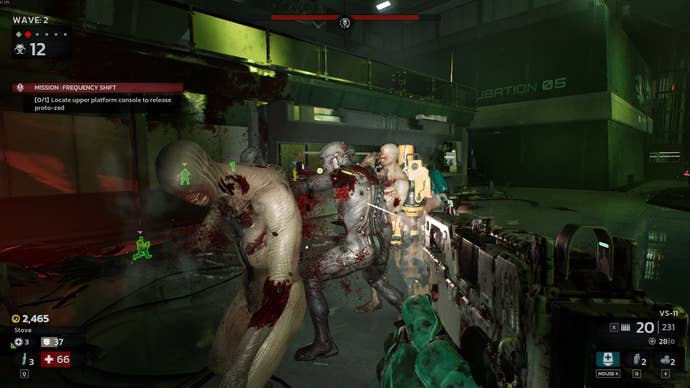
KF3 actually has an answer for its own underwhelming guns: an attachment crafting system. The idea is that just as you earn XP to level up perks, you gather crafting materials across each game, then spend them back at base on stat-boosting hardware customisations. You won’t necessarily spawn in with these tailored pieces, but they’ll take the place of the random upgraded guns you’d otherwise find in the inter-round shop.
I’ve no problem with the general concept, and have happily slapped better sights or extended mags on the weapons I usually buy anyway. But the available add-ons are a weird mix of clear upgrades and gadgets that make such boringly minute stat shifts that I can barely muster the enthusiasm to give an example. How about a laser sight that adds a whole 4% accuracy? Think carefully, though, because it’s either that or a foregrip that only adds 2%, but has a widowmaking -5% recoil bonus.
There are maybe some dedicated, max-difficulty sickos to whom this crafting malarkey might provide an edge. For the rest of us, it’s busywork, with no sense that a juicy powerspike is on the cards if you can just gather up a few more jars of clone goo. And frankly, it’s hard not to feel the same about the perk upgrades too. A lot of these do deliver much more generous bonuses, like boosting your grenade or healing syringe capacity – potential lifesavers, in some scenarios – but moving up through the ranks requires so much experience, and passing through so many more junk skills that only provide measly percentage boosts to existing abilities, that I can’t see them as a reason to keep playing in themselves.
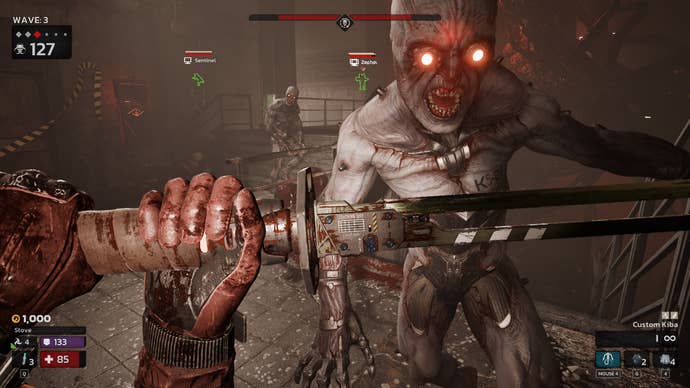
Also feeding the ennui is a medley of technical issues. Performance is languid – I get between 45-60fps using High quality on my RTX 3090, once the god-king of graphics cards, and that’s just on 1440p with Balanced DLSS. On top of that, it’s not uncommon to get sudden, substantial stutters when an enemy wave spawns in. Zeds themselves are frequent glitch victims, too: I’ve seen them pop into being next to spawnpoint vents instead of crawling out, fall through scenery after being nonlethally bashed backwards, and briefly snap into the dreaded A-pose when navigating uneven terrain. “Poor things”, I muse, racking a shotgun with a -3% spread choke.
I appreciate that I’m coming to Killing Floor 3 with the series’ staples firmly entrenched, if not especially fresh, in my mind. Perhaps if all this dosh-earning clone slaughter is new to you, its (mostly) agreeable heaviness will sustain you for longer.
Personally, I look at it and see a game that only barely iterates, even slipping backwards on gun design and tech fidelity, and that’s just not an appealing approach during what often seems like a golden age for more ambitious co-op shooters. Helldivers 2 deftly balances large-scale warfare with slapstick comedy. Warhammer 40,000: Darktide is a deceptively deep and immaculately presented horde brawler. And Deep Rock Galactic has good-natured teamplay down to a science, thanks in part to its own clever arsenal of sci-fi tools and weaponry. Killing Floor 3? That has a good headshot and a plus-2% foregrip.